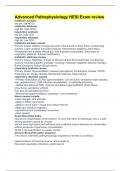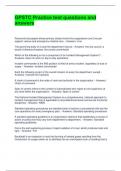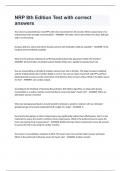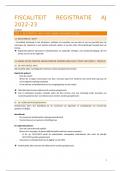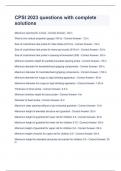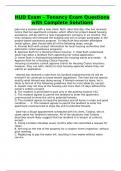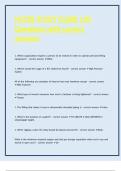Contents
Section 1: Problem-Solving .................................................................................................................... 2
Section 2: Attention and Social Attention ............................................................................................... 7
Section 3: Word Recognition ................................................................................................................ 13
Section 4: Sleep and Cognition ............................................................................................................. 17
Section 5: Reasoning............................................................................................................................. 22
Section 6: Judgement ............................................................................................................................ 26
Section 7: Unilateral Neglect ................................................................................................................ 30
, Section 1: Problem-Solving
Defining Cognition:
• Eysenck & Keane (2015)
o Concerned with the internal processes involved in making sense of the
environment and deciding what action might be appropriate.
o These processes include attention, perception, learning, memory, language,
problem-solving, reasoning and thinking.
History:
• 19th Century and Early 20th Century:
o Psychology is considered a sub-field of philosophy
o Introspection is a popular method
• Early 20th Century:
o Evolutionary theory inspired interest in animal behaviour
o Thorndike and Pavlov
o The 1913 Behaviourist Manifesto (Watson)- behaviourism opened the way to
thinking about behaviour and the rejection of old methods such as
introspection.
▪ ‘The time seems to have come… where it no longer deludes itself into
thinking that it is making mental states the object of observation’.
• Post WW2:
o Discoveries in the field of mathematics and technology.
o Major discovery- all information can be expressed as binary units, 1 and 0.
o When information is represented this way, information can be handled in any
kind of hardware.
o New types of cognitive theories developed as a result:
▪ Must be able to generate testable hypotheses
▪ Box and arrow diagrams became popular e.g., Broadbent’s theory of
selective attention.
▪ Computational models e.g., models of word recognition.
Problem Solving:
• Dunker (1945): A problem arises when a living organism has a goal, but does not
know how this goal is to be reached’
o Very general definition
• To overcome this, cognitive psychologists have come up with a narrower, more
manageable definition of problem-solving (see definition above).
• Eysenck and Keane (2020)
o Purposeful (goal-directed)
o Involves cognitive (non-automatic) processes
o Only exists when someone lacks the relevant knowledge to produce an
immediate solution.
,Types of Problems:
1) Insight Problem:
• Solutions require a one-off insight
• Often involves a reorganisation of mental representations of the function of
items.
• Example:
o Two-string Problem (Maier, 1931)
o Two pieces of string are hanging from the ceiling
o The person has to tie one piece of string to the other
o Problem- unable to reach one string whilst holding the other
o Room contains objects such as poles, pliers and extension cords
o Traditional solution- tie the pliers to one piece of string to create a
pendulum. From this, it is possible for the string to swing across and
the person can tie them together.
2) Non-Insight Problem:
• Require incremental and sequential problem-solving
• Involves working through the problem gradually, step-by-step.
• Trial and error
• Tend to involve strict rules that restrict problem-solving progress.
• Example:
o Tower of Hanoi
o One pole contains a tower of doughnuts varying in shape with the
largest on the bottom and the smallest on the top
o The person must recreate the tower on the third pole by moving the
doughnuts. However, each piece must only be placed on a larger piece.
o Trial and error process.
• Processing of insight vs non-insight problems:
o Jung-Beeman et al (2004)
o Participants carried out the Remote Associates Test
o Participants are given three words such as fence, card and master
o Participants are tasked with identifying a word that can be combined with each
of the three words to form a new compound word.
o E.g., ‘post’ can be added to create ‘fencepost’, ‘postcard’, ‘postmaster’
o Participants were asked to indicate whether they came up with the solution
using insight or another strategy.
▪ The study demonstrated the right anterior superior temporal gyrus was
activated only when solutions involved insight, not non-insight trials.
▪ Demonstrates that the brain responds differently to insight and non-
insight problem-solving.
, Theories of Problem-Solving:
1) Representational Change Theory:
• Ohlsson (1992)
o When you encounter a problem, your representation is used to search
your memory for relevant knowledge to solve the problem.
o Often, an impasse (unsure of how to proceed) is encountered.
o An impasse occurs when our mental representation of the problem is
incorrect.
o The problem representation must be restructured for insight to occur
o This can occur in three ways:
▪ Elaboration- new information (e.g., a hint)
▪ Constraint relaxation- extend ideas of what actions are possible
▪ Re-encoding (e.g., pilers can act as a weight)
o Insight often follows the formation of a correct representation
• Examples of problems:
o Elaboration and re-encoding
▪ The Mutilated Chessboard Problem
▪ 32 dominoes will cover a normal chessboard
▪ If two squares are removed from diagonally opposite corners,
will 31 dominoes cover it?
▪ Answer- No
▪ Insight needed to solve the problem- elaboration (the two
squares removed are white)
▪ If one square was white and the other was black, it would be
possible
▪ Kaplan and Simon (1990):
Participants thought aloud while solving the problem
Two representational changes are needed to gain insight
Each domino covers one white and one black square
(re-encoding)
The board has lost two white squares (elaboration)
Hence 31 dominoes cannot cover the board
o Constraint Relaxation
▪ Knoblich, Ohlsson and Raney (2001):
Move a single stick to produce a true statement
Question: IV= III – 1
Answer expected: IV – III = I
Participants spent more time fixating on the values than
the operators
Suggests that their representations of the problem
specified that the values needed to change
Fixations on the operators increased as participants
approached a solution


